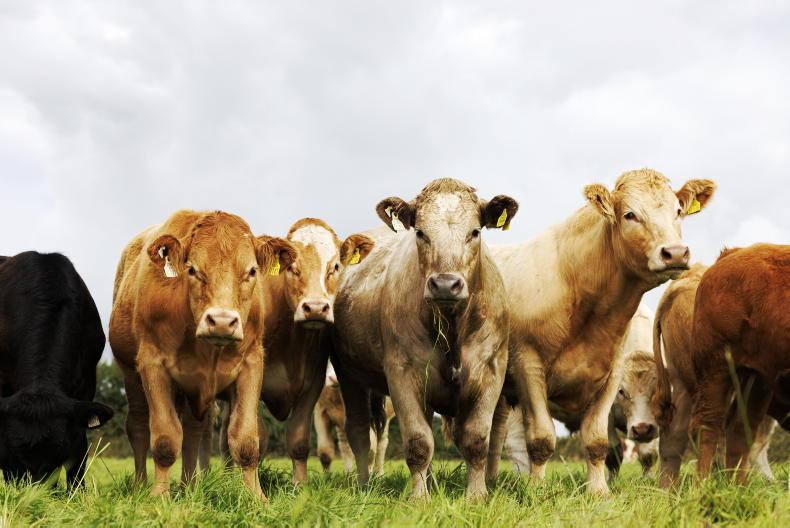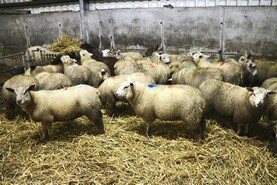The last two days or so worth of rain are a sharp reminder that at this time of the year, ground is far less able to cope with heavy showers.
Shorter days, colder nights and less drying in breezes can mean that once rain comes, ground conditions can rapidly deteriorate. As it stands, getting through the first half of the last rotation in the good conditions we have had so far is a welcome relief compared to the last two back ends we’ve had.
Lighter covers on a lot of farms has meant that getting in and grazing out paddocks quickly has been easy, but the kick back on this is that covers are rapidly disappearing on a lot of farms.
Grazing off these lighter covers has seen some good regrowths appear, but be careful not to be tempted to re-graze these.
If it has been grazed in October, then hold off on grazing that paddock again until the spring; the grass will be much more valuable to you then.
If you do find yourself running rapidly short of grass, then action needs to be taken if you wish to keep grazing in to November.
If ground is capable of taking it, cattle can be supplemented with silage at grass. If not, then housing of some stock will be necessary to keep youngstock at grass for longer.
Finishing cattle and spring calving cows are the best suited to being indoors at this point.
Where spring calvers have only recently been weaned. caution should be taken that mastitis doesn’t become an issue.
Keeping slats limed, using a teat sealer and restricting diet to allow cows to dry up should aid in reducing this risk.
Ken Gill – Clonbollogue, Co Offaly
Grass is very tight at the minute, but I am hoping to keep all cows and calves out until the 1 November. I’m on the last rotation here and cows are getting a bale of peas and barley at grass to help slow them down.
Cows will be housed at the end of the month with breeding commencing on the 1 November, while the yearling cattle will go on the stubble, rape and kale mix then, so all cattle will be off the grass paddocks.
Calving has gone well this year, with 62 cows and 62 calves, including two sets of twins, one mortality and one cow showing up empty. The last of the finished cattle went last week, and bar some grading 2s on fats I’m happy with performance and kill out this year.
System Organic suckler to beef
Soil Type Variable
Farm cover (kg/DM/ha) 244
Growth (kg/DM/ha/day) 13
Demand (kg/DM/ha/day) 26
Niall O’Meara – Killimor, Co Galway
We’ve gotten a good bit of rain, but ground conditions are all right for the most part, with only paddock entrances and around troughs showing signs of the sticky conditions. We have 40% of the farm grazed and closed off.
The autumn calving cows are in two mobs, with maiden heifers for AI in a third. These will all be bunched together in the coming days for the final two weeks or so of grazing. Planned housing date is 1 November, with breeding commencing on 7 November.
From 25 October, cows will be brought in for an hour a day for some silage and a 0.5kg of meal to adjust them to their winter diet. We plan on spreading 20t of lime on some paddocks with a pH of six.
System Suckler to weanling
Soil Type Variable
Farm cover (kg/DM/ha) 740
Growth (kg/DM/ha/day) 12
Demand (kg/DM/ha/day) 26
Stephen Frend – Newford Herd, Co Roscommon
The rest of the finishing cattle were housed at the weekend. Graze outs with the weanlings and sucklers are still good, with cows cleaning up paddocks after calves. There’s probably a month’s grass there for weanlings if the weather holds, while the cows will likely be housed the next time the weather breaks.
Five cull cows were sold last week, with carcase weights of 320-397kg. A draft of the first 25 heifers housed six weeks ago will be done in the coming days. There are 15-18 of these likely fit for slaughter, with an average liveweight of 595kg.
Calves had been coughing and were dosed, and despite taking a week or so to stop afterwards there is no coughing occurring now, so they should thrive on.
System Suckler to beef
Soil Type Variable
Farm cover (kg/DM/ha) 809






 This is a subscriber-only article
This is a subscriber-only article










SHARING OPTIONS: